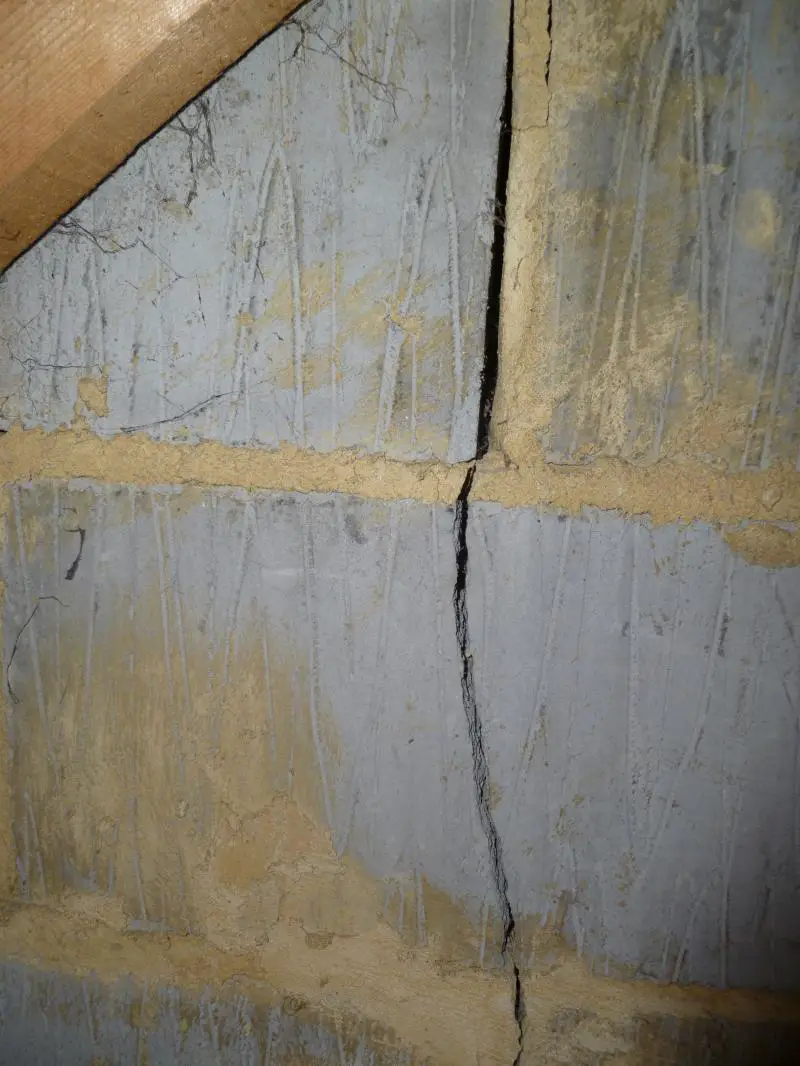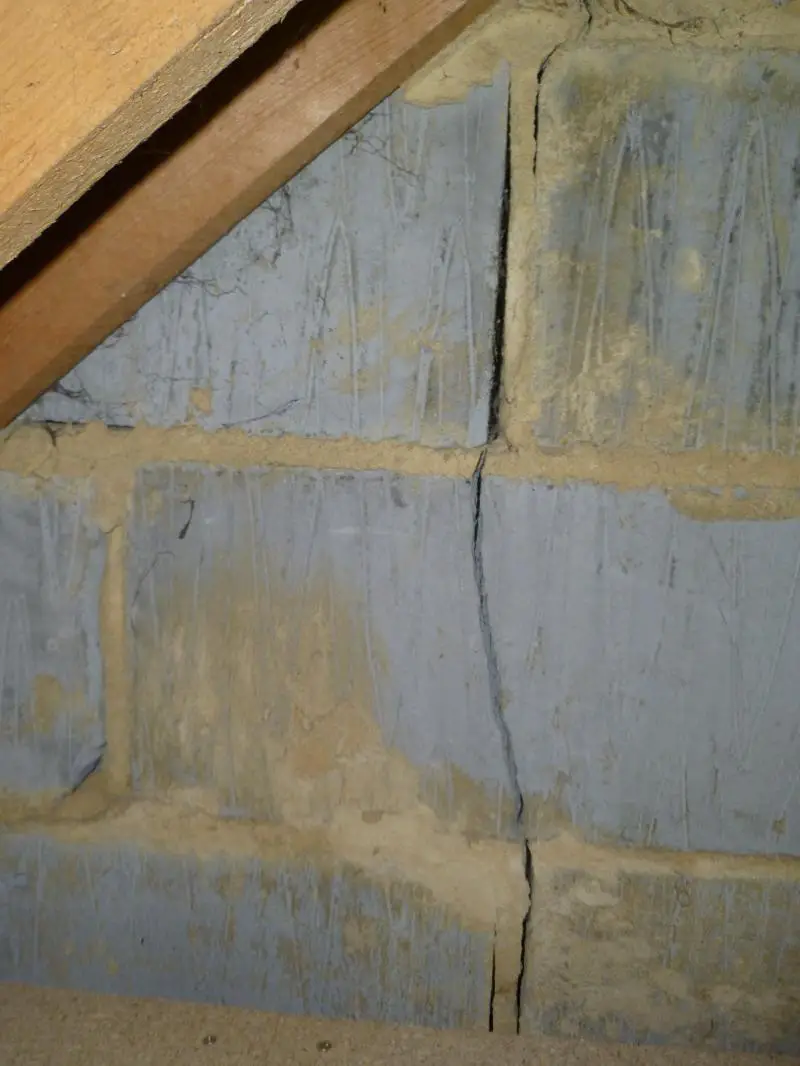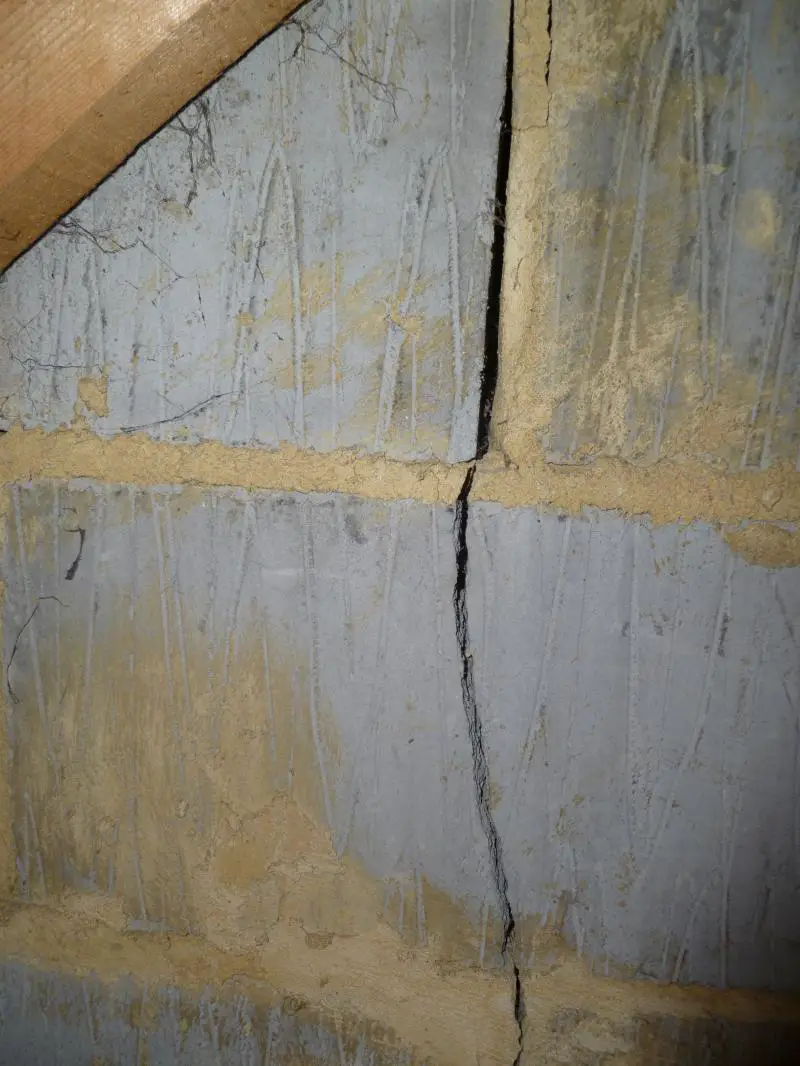Hi all,
we are in the process of buying a detached property built in 1983 which extends over 3 floors. We noticed that there’s a large vertical crack of 8mm width at the top and 5mm at the bottom of the loft wall. The crack goes through the mortar and blockwork as shown in the attached photos. The house has cavity insulation and is double skinned. The owner redecorated in 2013 and all I can see just in the wall just below the location of crack at the loft is a hairline crack of 1mm. The external wall appears plumb with no cracks. The owner’s structural engineer gave a report stating that in his opinion this is a thermal movement crack but he has no liability for our purchase. Do you think we could trust this? Is it possible such a wide crack to be due to thermal movement?
We look forward to your responses as we’re under massive stress at the moment!
Thank you
we are in the process of buying a detached property built in 1983 which extends over 3 floors. We noticed that there’s a large vertical crack of 8mm width at the top and 5mm at the bottom of the loft wall. The crack goes through the mortar and blockwork as shown in the attached photos. The house has cavity insulation and is double skinned. The owner redecorated in 2013 and all I can see just in the wall just below the location of crack at the loft is a hairline crack of 1mm. The external wall appears plumb with no cracks. The owner’s structural engineer gave a report stating that in his opinion this is a thermal movement crack but he has no liability for our purchase. Do you think we could trust this? Is it possible such a wide crack to be due to thermal movement?
We look forward to your responses as we’re under massive stress at the moment!
Thank you




